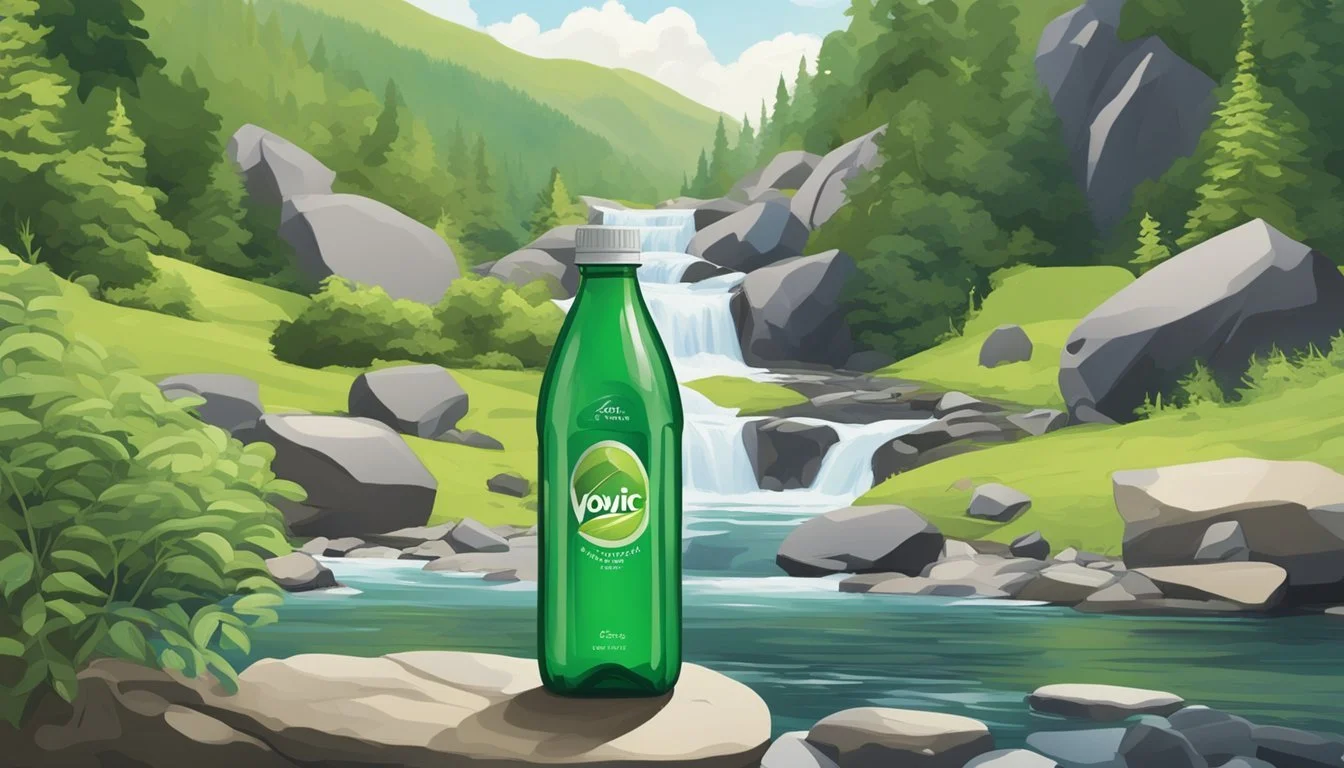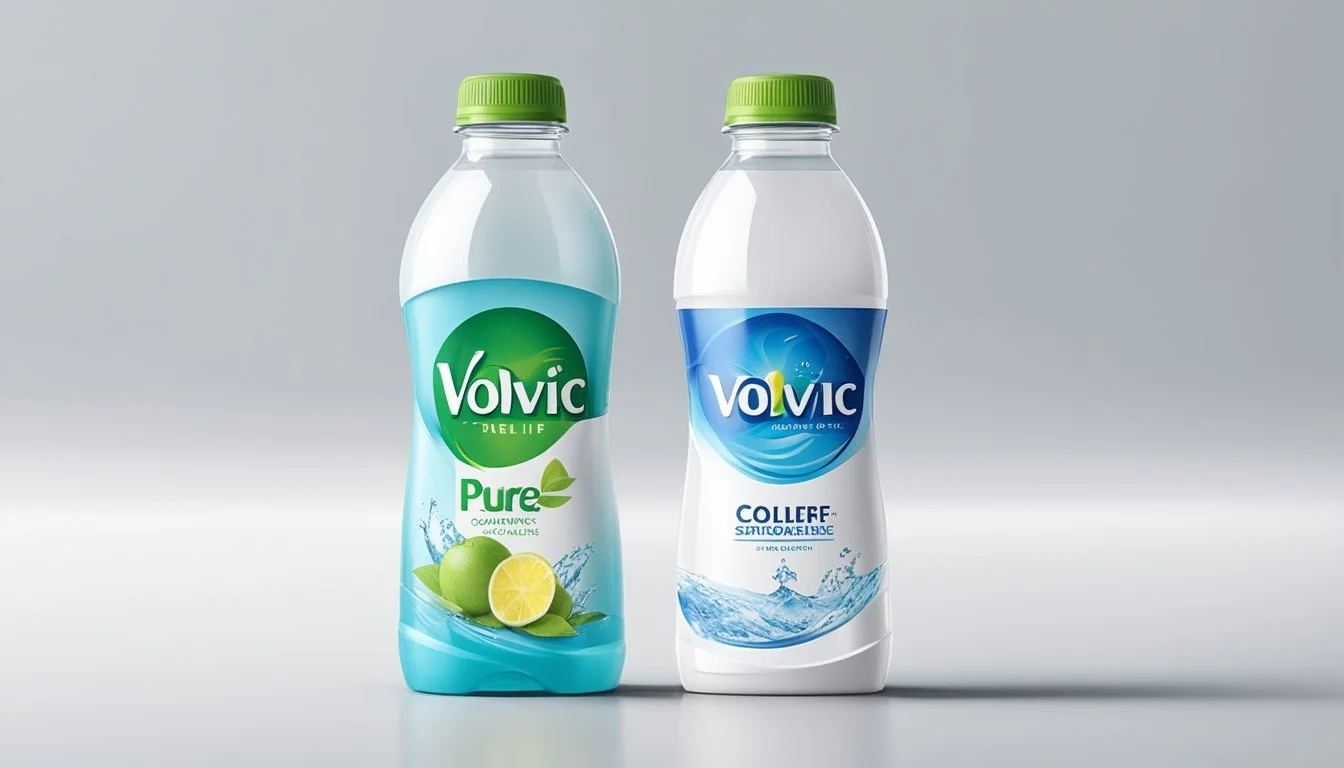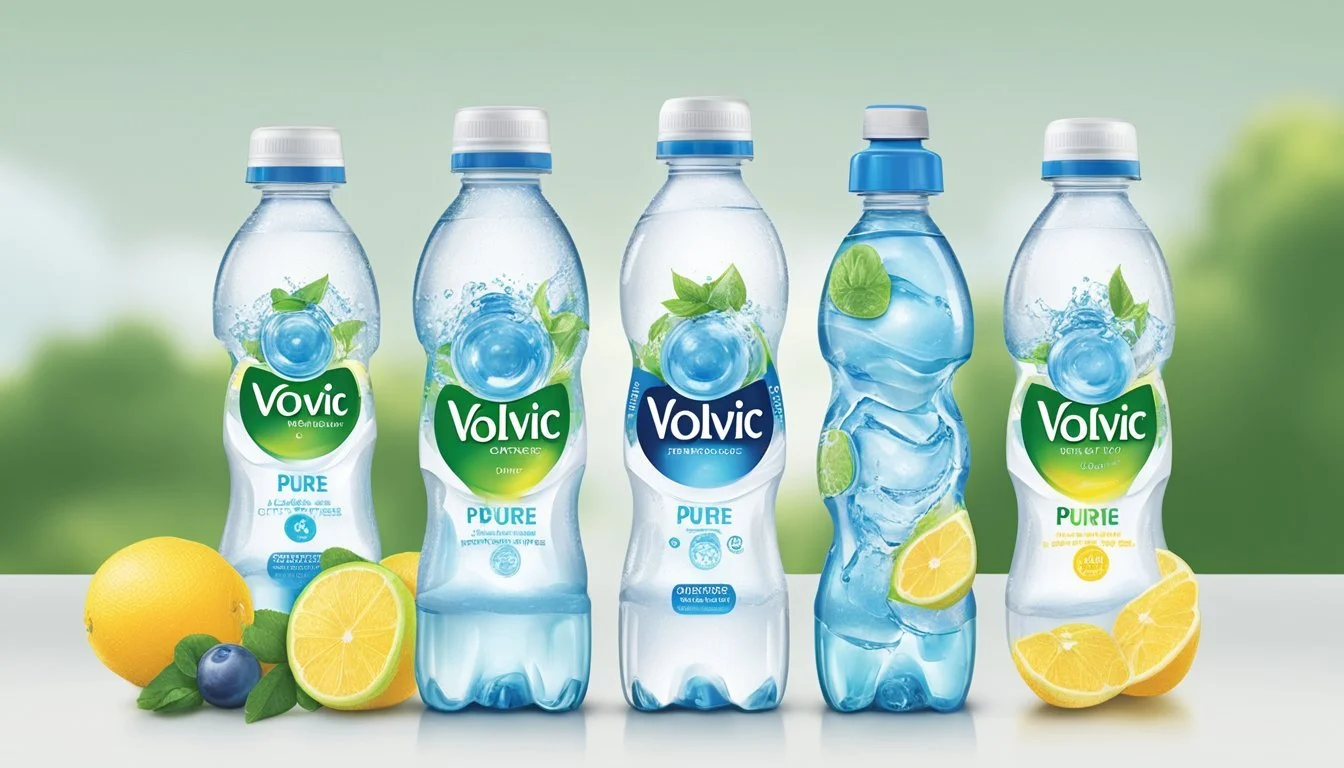Volvic vs. Pure Life
Comparing Quality and Taste
Comparing bottled water brands often boils down to taste and quality, and the debate between Volvic and Pure Life is no exception. Volvic is sourced from natural springs in France's volcanic region, which gives it a unique mineral profile that many find refreshing. Pure Life, on the other hand, originates from municipal sources and undergoes rigorous purification processes.
While Volvic offers a crisp taste that many consumers appreciate, Pure Life is criticized for its chalky and metallic flavors that some attribute to its plastic packaging. For those seeking natural water with a distinctive taste, Volvic is generally considered the superior choice. Both brands meet safety standards, but their sources and processing methods set them apart in the bottled water market.
Hydration remains key, whether you choose Volvic's volcanic spring water or Pure Life's purified option. Exploring the subtleties of each brand can guide consumers to make a more informed decision based on their taste preferences and idea of quality. Understanding the differences helps emphasize the importance of choosing bottled water that aligns with personal hydration needs and taste satisfaction.
The Significance of Water Source
The origin of water plays a crucial role in determining its taste, purity, and mineral content. Bottled water sourced from natural springs often differs significantly from groundwater sources.
Natural Springs vs. Groundwater Sources
Natural springs like those used by Volvic draw water from underground, where it has been naturally filtered through layers of volcanic rock. This process enriches the water with essential minerals and imparts a unique taste. Volvic, for example, is sourced from a spring in the Auvergne region of France, which is known for its volcanic geology.
In contrast, groundwater sources such as those used by Nestlé Pure Life are often extracted from wells and may require more extensive purification processes. Groundwater may be more susceptible to contamination and often necessitates additional treatment to ensure safety and quality. This can affect the mineral content and taste compared to naturally filtered spring water.
Impact on Taste and Purity
The taste of spring water varies depending on the geological features of the source. For instance, water filtered through volcanic rock, like Volvic, tends to have a distinctive, refreshing taste due to its unique mineral composition.
On the other hand, groundwater, depending on its treatment, may have a less distinctive taste. Brands like Nestlé Pure Life often undergo rigorous purification processes to remove any impurities, which can strip away naturally occurring minerals and alter the taste profile. This ensures safety and consistency but may result in a less robust flavor.
The purity of water from natural springs often benefits from the natural filtering effect of the earth's layers. In contrast, groundwater may require advanced filtration systems to achieve the same purity levels. Spring water’s natural mineral content is a key factor in its perceived quality and taste, offering a distinct experience not always matched by treated groundwater.
Brand Profiles
This section introduces the unique qualities and sourcing methods of Volvic and Nestlé Pure Life, highlighting their origins and market presence.
Volvic: Sourced from Volcanoes
Volvic water is sourced from the natural springs at the heart of the volcanic region in Auvergne, France. The water filters through six layers of volcanic rock, which naturally enriches it with minerals. This journey imparts a distinct taste that many find refreshing and pure.
Volvic has built a reputation on its unique volcanic origin. This sourcing method ensures a consistent mineral profile that appeals to consumers looking for naturally sourced hydration. The brand emphasizes environmental sustainability, using recyclable packaging and conducting water conservation efforts around their spring.
Nestlé Pure Life: A Global Favorite
Nestlé Pure Life sources its water from various wells and municipal supplies, ensuring rigorous purification processes to maintain high-quality standards. The brand is known for its stringent filtration that includes reverse osmosis and mineral enhancement, providing a clean and crisp taste.
As one of the most recognized bottled water brands worldwide, Pure Life has a vast market presence. The brand’s reliability and availability make it a popular choice for daily hydration. Nestlé also focuses on sustainable practices, such as reducing plastic usage in packaging and promoting recycling initiatives to minimize their environmental impact.
Water Quality and Health Benefits
When examining the water quality and health benefits of Volvic and Pure Life, key factors include mineral composition and hydration effects. Understanding these can help you make an informed choice for your hydration needs.
Mineral Composition and Its Effects
Volvic water is sourced from volcanic regions in France, giving it a distinct mineral profile. It contains calcium, magnesium, and silica. These minerals contribute to bone health, muscle function, and skin health. Volvic’s mineral content is naturally occurring, resulting in a softer taste.
Pure Life, on the other hand, undergoes a purification process where minerals are added back. It primarily includes calcium chloride, sodium bicarbonate, and magnesium sulfate. While these added minerals target improved taste and potential health benefits, the process results in a crisper flavor.
Mineral Volvic (mg/L) Pure Life (mg/L) Calcium ~11.5 ~10 Magnesium ~8 ~7 Silica ~32 - Sodium ~9 ~20
Volvic may appeal to those who prefer naturally sourced minerals. Pure Life is fortified to ensure consistent mineral levels, appealing to those seeking specific mineral intake.
Hydration and Electrolyte Balance
Volvic’s naturally occurring electrolytes such as magnesium and potassium support efficient hydration and maintain electrolyte balance. This is particularly beneficial after physical activities. The balanced pH of Volvic, around 7, ensures it is neither too acidic nor too alkaline, making it gentle on the stomach.
Pure Life features a complex purification process that removes impurities before adding back minerals like magnesium sulfate and calcium chloride. These ingredients help maintain electrolyte balance and provide a slightly alkaline pH. The fortified mineral content ensures consistent hydration, especially in areas where local water quality varies.
In summary, Volvic's naturally sourced profile offers a gentle hydration option, while Pure Life's engineered approach ensures consistent hydration benefits, appealing to diverse needs and preferences.
Filtration and Purification Processes
When comparing Volvic and Nestlé Pure Life, it's essential to understand the intricate filtration and purification processes each brand employs. These methods ensure the safety and quality of the bottled water you consume daily.
Understanding Reverse Osmosis
Reverse osmosis (RO) is a widely-used purification technology. This process forces water through a semipermeable membrane, removing contaminants and impurities. RO eliminates dissolved salts, bacteria, and other organic materials, ensuring the water is clean and safe.
Nestlé Pure Life uses advanced purification techniques, including RO, to provide high-quality, purified water. This process is particularly effective in transforming ordinary tap water into drinkable, purified water. Volvic, on the other hand, relies on natural filtration through volcanic rocks.
Assessing Purification Techniques Across Brands
Volvic water is naturally filtered through layers of volcanic rock. This natural filtration imparts unique mineral composition and balances the water's taste. It undergoes carbon filtering to eliminate any residual contaminants before bottling.
Nestlé Pure Life employs a multi-step purification process known as Hydro-7. This rigorous process includes RO, carbon filtration, and mineral addition to ensure safety and taste consistency. The Hydro-7 process is efficient at removing contaminants while adding back essential minerals for taste.
The Role of Filtration in Ensuring Safety
Filtration plays a critical role in ensuring the safety of bottled water. It removes physical impurities and prevents the presence of harmful contaminants. Disinfection steps, like ozonation, ensure bacterial safety.
For Volvic, the natural filtration through volcanic rock combined with carbon filtration offers robust protection against contaminants. Nestlé Pure Life's Hydro-7 process provides a high level of assurance through multiple filtration and purification stages.
Both brands prioritize strict safety standards in their processes to deliver safe, high-quality bottled water. Nestlé Pure Life's inclusion of advanced disinfection measures, alongside RO and carbon filtration, exemplifies a comprehensive approach to water safety.
Comparative Analysis of Taste
When comparing Volvic and Pure Life, their taste differences can be attributed to mineral content, purification methods, and aftertaste. Understanding these elements helps consumers make an informed choice about their preferred bottled water.
Factors Influencing the Water Taste
Mineral Content:
Volvic water is sourced from volcanic regions in France, giving it a distinct mineral profile with natural electrolytes like calcium, magnesium, and potassium. This unique blend results in a slightly alkaline pH of around 7.0 to 7.5, which some drinkers find refreshing and smooth.
Purification Processes:
Pure Life undergoes a rigorous purification process including reverse osmosis and additional filtration methods. This extensive treatment ensures an absence of impurities but can strip away minerals that contribute to taste, resulting in a more neutral, clean flavor.
Aftertaste:
The mineral composition of Volvic often leaves a clean, crisp aftertaste that some consumers describe as refreshing. In contrast, Pure Life's purified nature may leave minimal aftertaste, focusing on delivering a pure water experience. Both brands cater to different taste preferences, highlighting the importance of individual taste perception.
Consumer Reports and Taste Tests
Consumer Preferences:
Consumer feedback indicates a split in preferences. Some prefer the natural taste and slight mineral richness of Volvic. Others favor the more neutral and crisp profile of Pure Life. Each has its loyal following based on individual taste.
Taste Test Results:
Taste tests often reveal that Volvic's mineral content provides a more complex flavor. In contrast, Pure Life's purified process delivers a straightforward, clean taste. These qualities can appeal differently depending on the hydration needs and taste sensitivities of water drinkers.
Best Bottled Water:
Volvic often appears in rankings as a favored choice for those who enjoy a mineral-enhanced taste. Pure Life, with its clean and neutral profile, is preferred by those seeking simplicity in their water. Both brands maintain high standards, making the choice largely subjective and dependent on personal preference.
Environmental Considerations and Sustainability
Environmental impact and sustainability are crucial factors when comparing bottled water brands. The bottling processes and packaging materials of Volvic and Pure Life reveal their commitment to reducing carbon footprints and enhancing recycling efforts.
Bottling Processes and Carbon Footprint
Volvic sources its water from natural volcanic springs, undergoing minimal processing. This allows for a lower carbon footprint as less energy is expended in purification. Additionally, the company uses renewable energy in its bottling plants to further reduce emissions.
Pure Life, sourced and treated in various locations, often requires more energy for purification. The brand's emphasis on transparency about its water sources and treatment processes can help consumers make informed choices. However, its more extensive filtration processes may result in a higher carbon footprint.
Packaging Materials and Recycling Efforts
Volvic bottles are made from PET plastic, including a significant percentage of recycled material (rPET). This reduces the demand for new plastic production and supports recycling infrastructure. The company aims to increase the proportion of rPET used in its packaging and enhance the overall recyclability of its products.
Pure Life uses similar PET plastic for its bottles but has also explored the inclusion of rPET. This effort aligns with broader sustainability goals. The brand's transparency in disclosing its packaging composition and recycling instructions encourages consumers to participate actively in recycling.
Volvic and Pure Life both demonstrate commitments to sustainability through their packaging innovations and recycling initiatives, catering to conscious consumers.
Regulatory Compliance and Consumer Safety
In comparing the regulatory compliance and consumer safety of Volvic and Nestlé Pure Life, it is essential to consider key regulatory standards, potential contaminants, and harmful chemicals. Both brands are held to stringent guidelines by several governing bodies to ensure the safety and quality of their bottled water.
FDA and EPA Standards
The FDA (Food and Drug Administration) and the EPA (Environmental Protection Agency) regulate bottled water and tap water, respectively, in the United States.
The FDA enforces standards for bottled water similar to the EPA's regulations for public water systems, ensuring bottled water is safe for consumption.
For instance, both agencies set limits for contaminants such as lead and arsenic.
Lead contamination must be kept below 15 parts per billion (ppb) as per the EPA.
In studies, Volvic and Nestlé Pure Life have consistently met these standards.
Both brands' compliance is regularly audited to confirm adherence, providing assurance to consumers regarding their safety.
Addressing Contaminants and BPA
Concerns about contaminants such as PFAS chemicals, heavy metals, and BPA (bisphenol A) are critical in evaluating the safety of bottled water.
Consumer Reports identified PFAS chemicals in various bottled water brands; these substances can pose health risks over long-term exposure.
Bottled water companies, including Nestlé and Volvic, emphasize stringent filtration processes to eliminate such contaminants.
While both brands claim their products are BPA-free, consumers are encouraged to verify through independent certifications.
Pure Life and Volvic adhere to FDA guidelines, which establish maximum allowable limits for contaminants like arsenic at 10 ppb.
Rigorous testing ensures neither brand exceeds these stringent limits, maintaining a high standard for consumer safety.
Marketing and Consumer Perception
Marketing plays a significant role in shaping the consumer perception of Volvic and Pure Life. This involves brand image, advertising strategies, and the influence of social media and influencers.
Brand Image and Advertising Strategies
Volvic often emphasizes its origin from the volcanic region of Auvergne in France, aiming to convey purity and natural filtration. Their advertising frequently highlights this unique sourcing, adding a layer of exclusivity and natural appeal. Creative campaigns often leverage imagery of pristine natural environments.
On the other hand, Nestlé Pure Life markets itself with a straightforward focus on family health and hydration. Their advertising often features everyday scenarios, targeting a broader demographic. Emphasizing affordability and accessibility, Pure Life campaigns usually promote the brand's extensive purification processes and adherence to regulatory standards set by the International Bottled Water Association.
The Role of Social Media and Influencers
Social media platforms like Twitter have become crucial battlegrounds for bottled water brands. Volvic collaborates with influencers who focus on health, fitness, and environmental sustainability, often using hashtags and engaging in social campaigns to reach eco-conscious consumers.
Nestlé Pure Life also leverages social media but tends to partner with family-oriented influencers and lifestyle bloggers. Their campaigns often center around themes of shared moments and community well-being, sometimes involving giveaway events to boost engagement.
Both brands use social media to foster direct engagement with consumers, encouraging them to share their personal experiences with the products. This interaction not only promotes brand loyalty but also enhances visibility in a competitive market.
Physical Properties of Water
When comparing Volvic and Pure Life bottled waters, several physical properties set them apart. Key aspects include pH levels, their acidity, and the presence of sodium and other dissolved solids.
Acidity, pH Levels, and Their Significance
pH levels measure the acidity or alkalinity of water. This is important for both taste and health.
Volvic typically has a pH around 7, making it neutral. In comparison, Nestlé Pure Life has a pH close to 6, indicating slight acidity.
Water’s pH impacts its taste and can have health implications. Neutral pH water, like Volvic, is often preferred for its clean taste. Slightly acidic water, such as Pure Life, can sometimes be better suited for those on specific health regimens.
The Presence of Sodium and Other Solids
The presence of sodium and other dissolved solids can vary significantly between bottled water brands.
Volvic contains minerals like bicarbonates and calcium, which can benefit digestion and bone health. It typically has lower sodium content, making it a good choice for those monitoring sodium intake.
Nestlé Pure Life, on the other hand, may contain slightly higher levels of sodium and a different mineral profile. This affects both the taste and the suitability of Pure Life for different dietary needs.
Examining these properties helps consumers make informed choices based on their health objectives and taste preferences.
Additional Considerations
Evaluating bottled water like Volvic and Pure Life involves examining trace ingredients and comparing them to tap water sources.
Trace Ingredients and Their Impact
Trace ingredients, including minerals and possible contaminants, play a crucial role in the quality of bottled water. Volvic water contains naturally occurring electrolytes such as calcium, magnesium, and silica, which can enhance taste and offer health benefits.
Pure Life undergoes a rigorous purification process involving reverse osmosis and additional mineral content added to improve flavor. While beneficial minerals are present, heavy metals and other pollutants should be minimized. Consumers should check the labels for specific mineral compositions and possible contaminants to make informed choices.
Comparing Bottled Water to Tap Water
Bottled water often boasts advantages over tap water, particularly in portability and taste consistency. However, tap water in many regions undergoes strict regulation for bacteria and contaminants, sometimes surpassing bottled water standards.
Volvic and Pure Life may offer better taste or perception of purity, but tap water can be equally safe and more environmentally friendly. Consider filtration systems for tap water to address taste or safety concerns. Comparing the mineral content of both options helps in choosing the best for personal health preferences and environmental impact.
More About Volvic
Mountain Valley Spring Water vs Volvic: Which Bottled Water is Better?
Volvic vs Kirkland Signature: Which Bottled Water is Better?
Volvic vs Richard's Rainwater: Which Bottled Water is Better?
Volvic vs Whole Foods Italian Still Mineral water: Which Bottled Water is Better?
More About Pure Life
Cascade Mountain vs Pure Life: Which Bottled Water is Better?
Hawaii Volcanic vs Pure Life: Which Bottled Water is Better?
Hawaiian Springs vs Pure Life: Which Bottled Water is Better?
Icelandic Glacial vs Pure Life: Which Bottled Water is Better?
Nestle Pure Life vs Pure Life: Which Bottled Water is Better?
Pure Life vs Kirkland Signature: Which Bottled Water is Better?
Pure Life vs Whole Foods 365: Which Bottled Water is Better?
Richard's Rainwater vs Pure Life: Which Bottled Water is Better?
Solan de Cabras vs Pure Life: Which Bottled Water is Better?
Talking Rain AQA vs Pure Life: Which Bottled Water is Better?
Whole Foods Italian Still Mineral water vs Pure Life: Which Bottled Water is Better?







